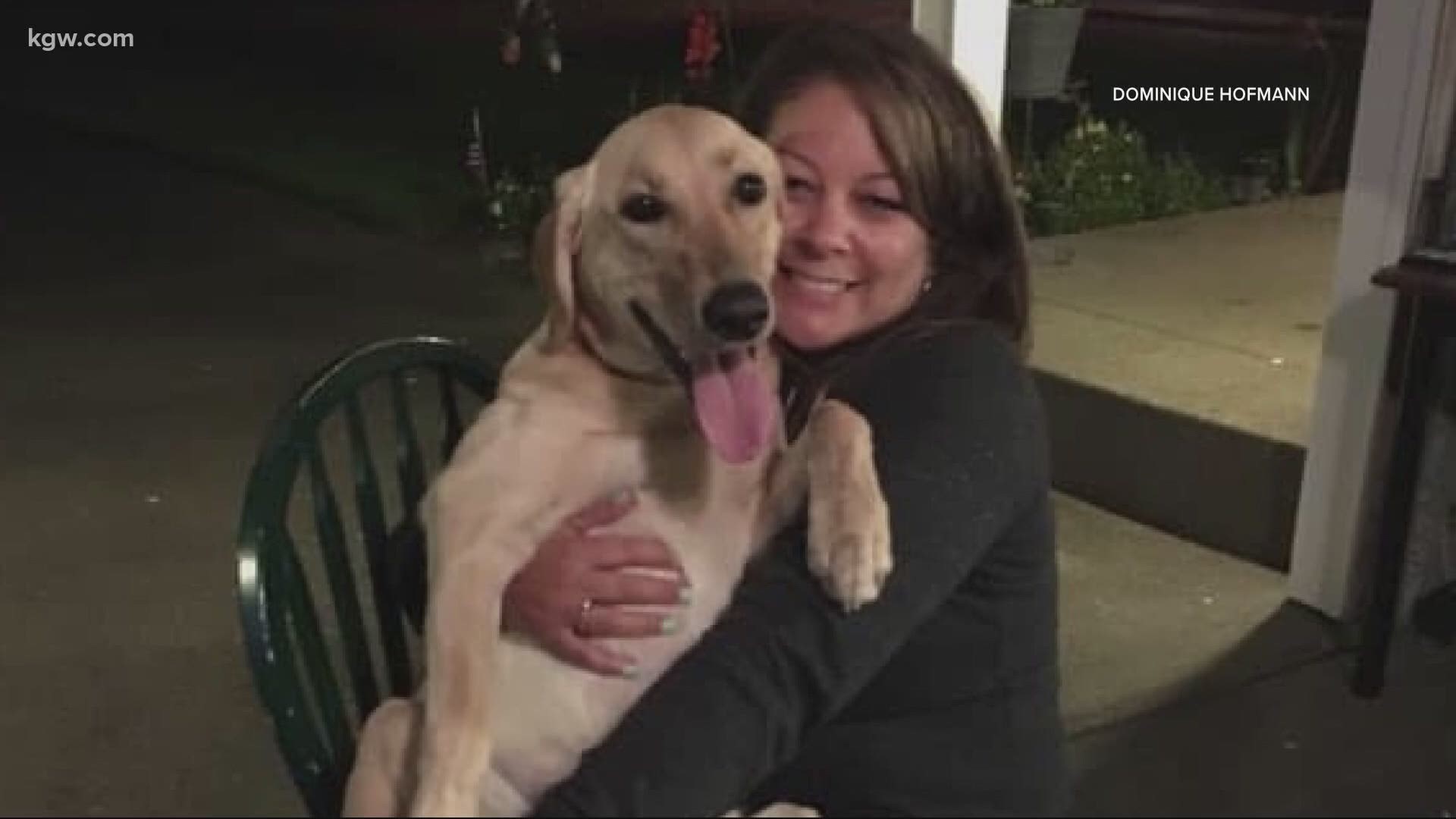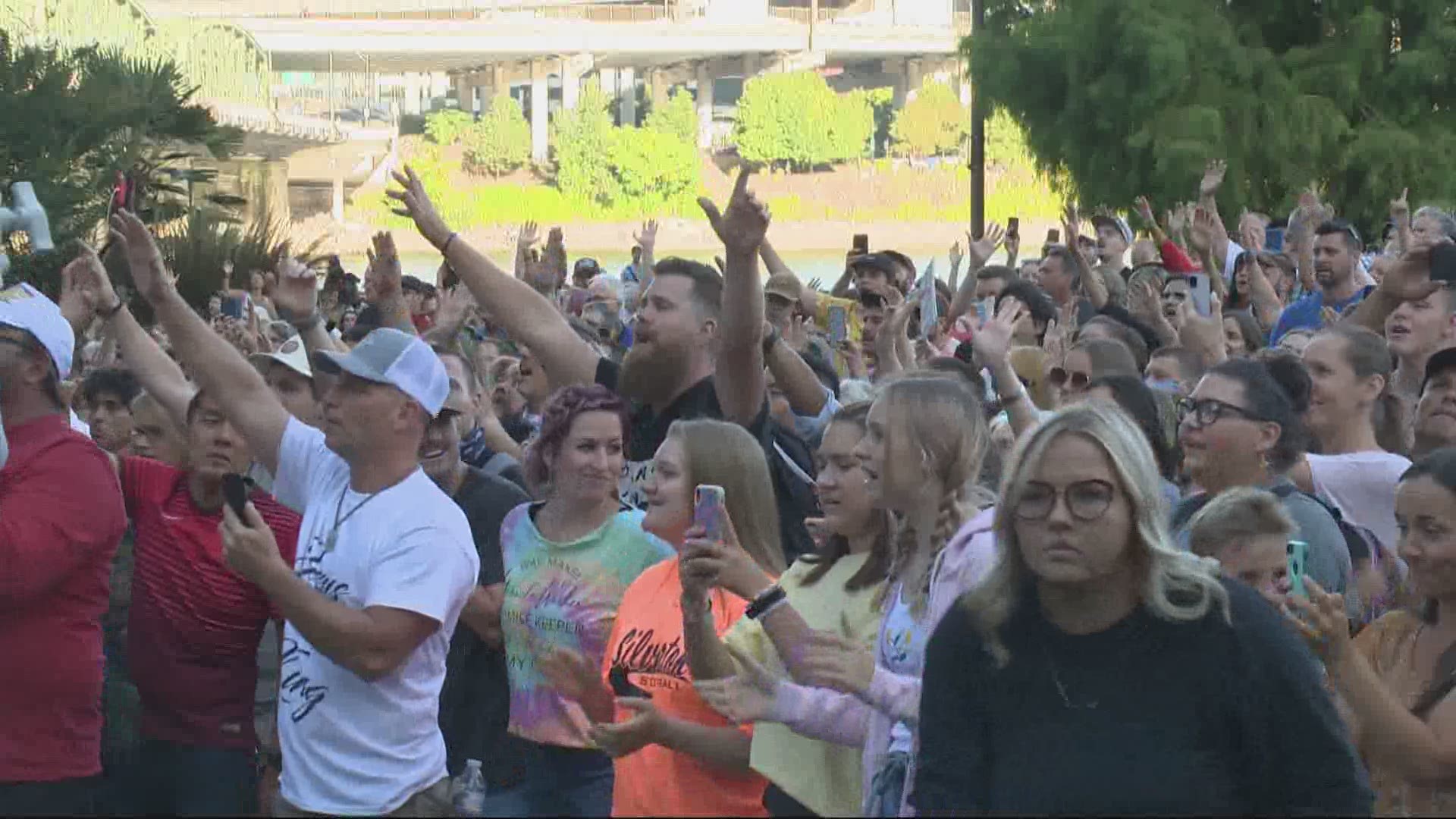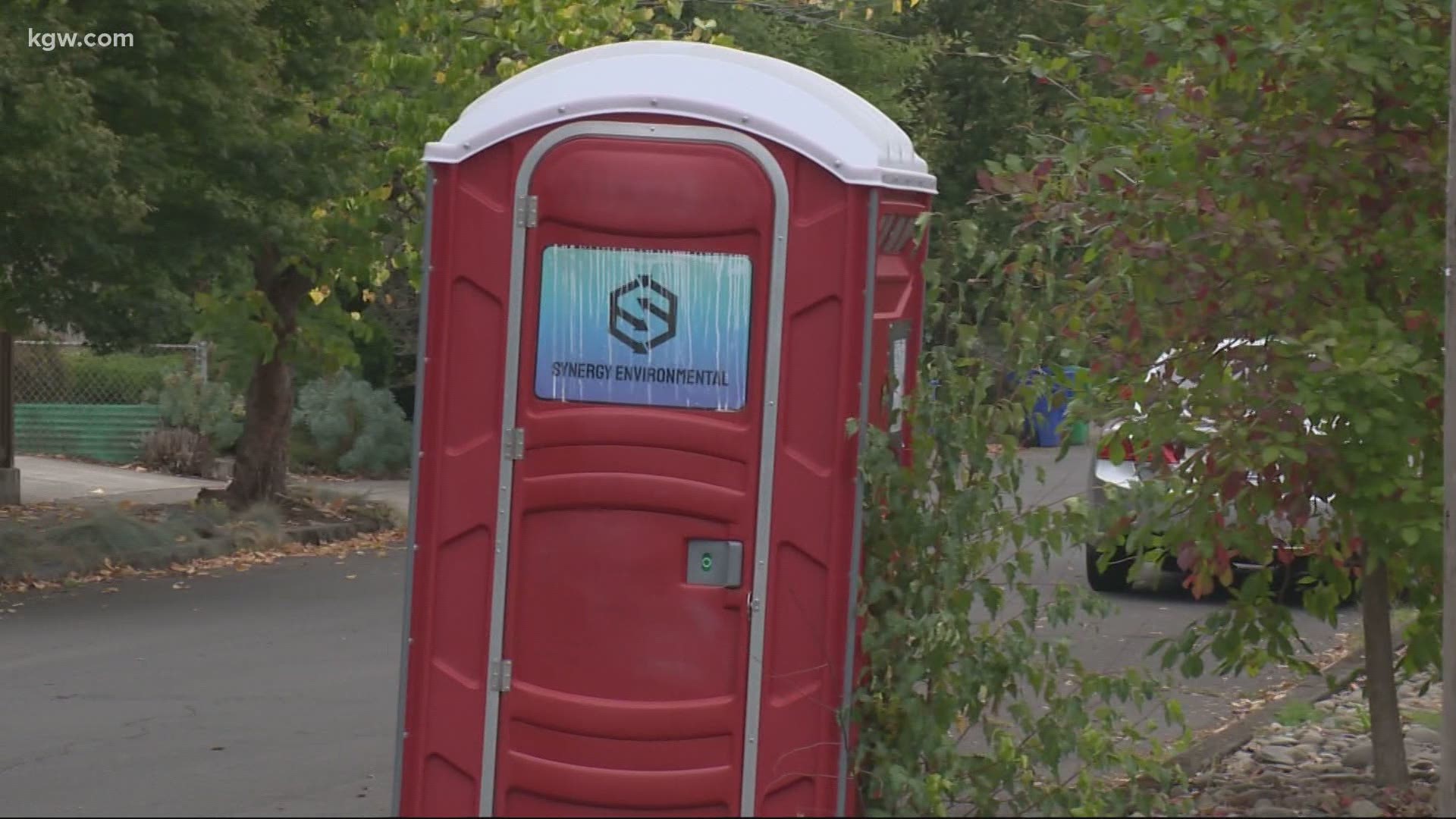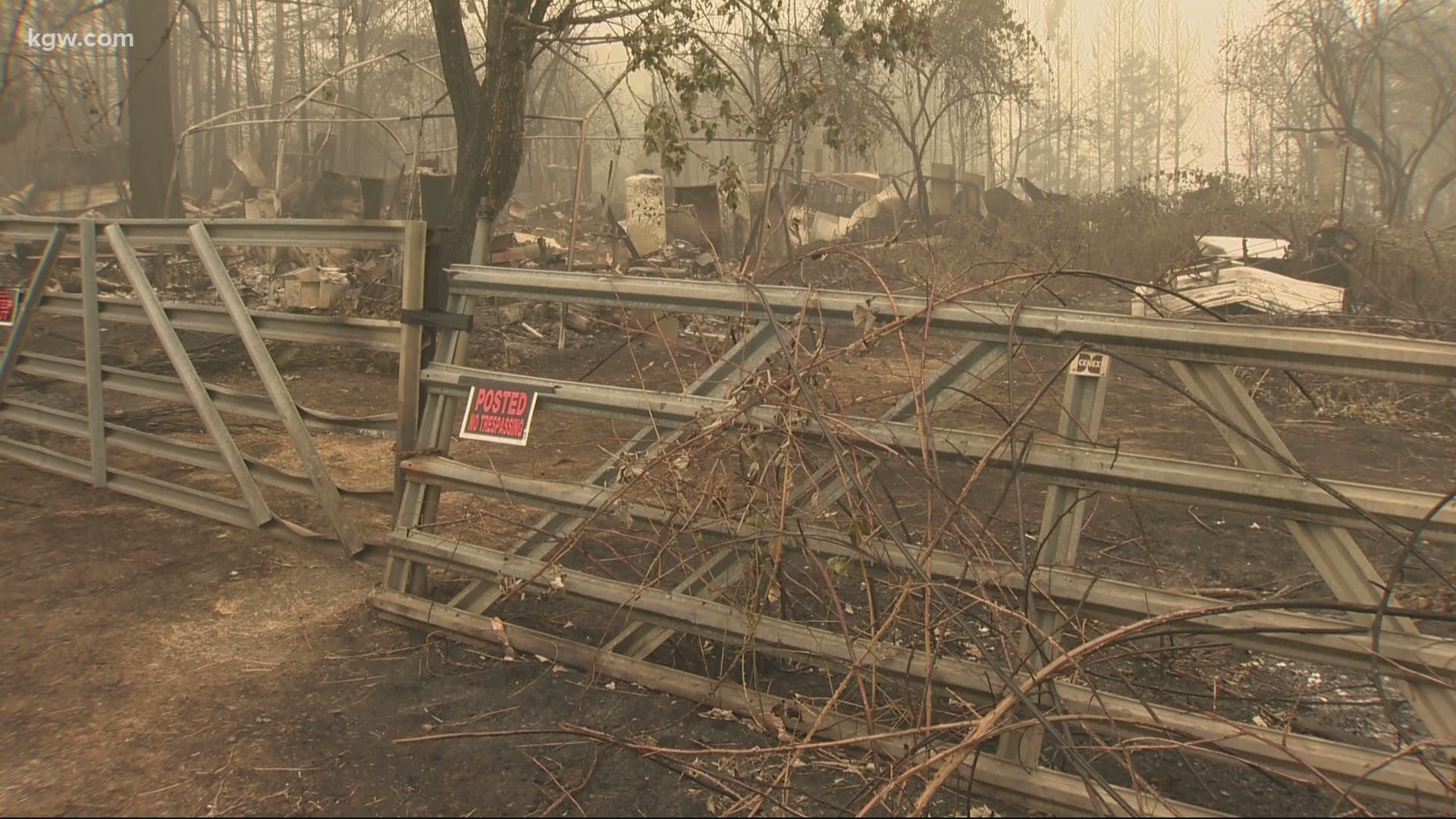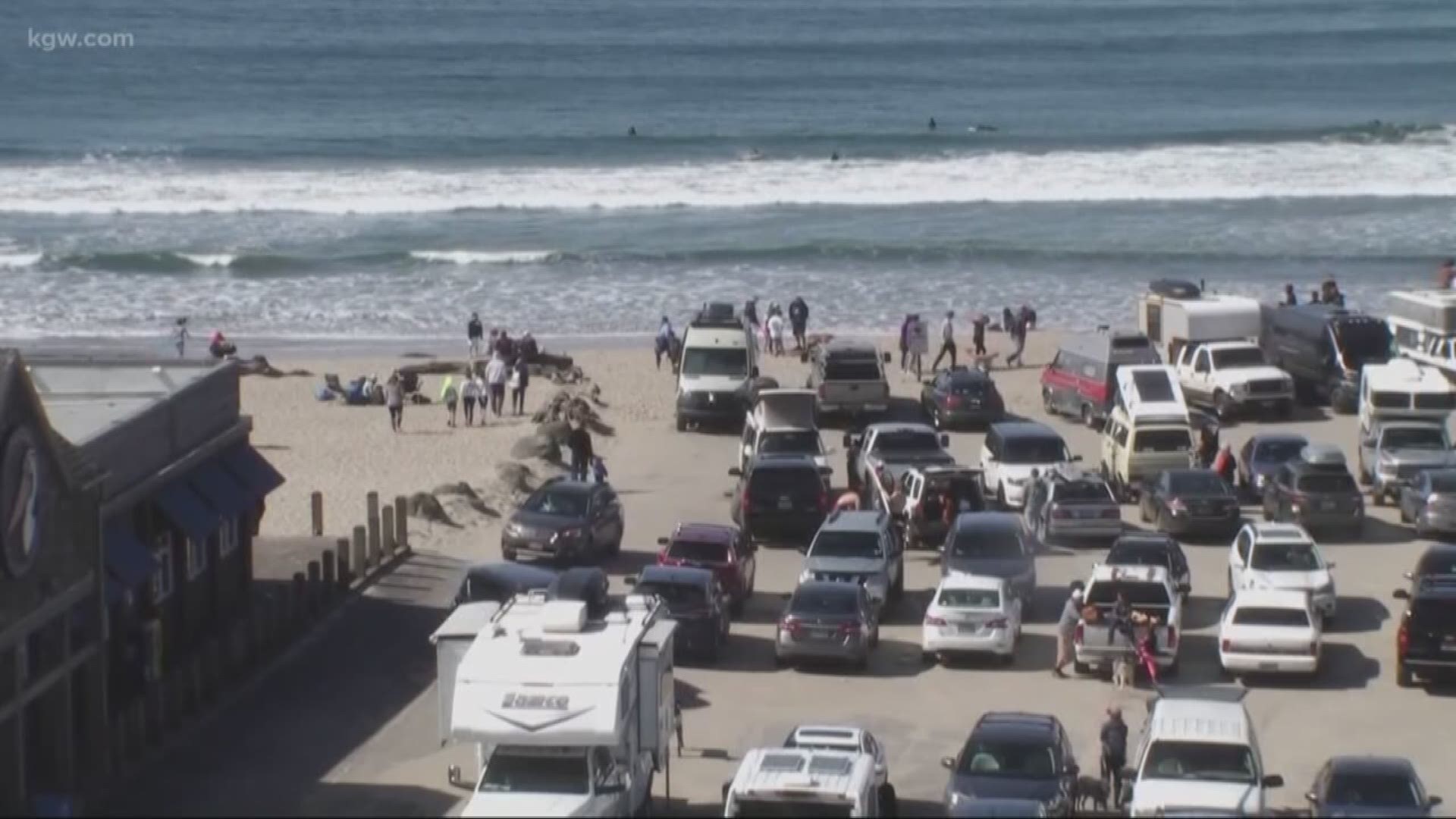Coronavirus, wildfires & protests: 10 stories you couldn't stop watching in 2020
From global pandemic to massive racial justice protests to controversial port-a-potties and more, this year has been one for the books.
Chad DeHart, KGW

We're finally here. It's the end of 2020, one of the wildest years most of us have ever lived through.
The entire year felt like a chapter book with a new surprise at each turn of the page -- especially in Portland. From the global pandemic to catastrophic wildfires, and massive protests for racial justice in between, here are KGW's top stories of 2020.
Wrong dog owner bashed online
In August, KGW brought you a story about a woman who was misidentified on social media and wrongfully accused of abandoning her dog in a Vancouver, Wash. park.
Dominique Hofmann, the owner of a 3-year-old lab named Ridge, described her dog as a "mama's boy" and said she sees him as family. So you might be able to imagine her frustration when people started putting her on blast, posting her name and photos in the comments on local news outlets' social media accounts.
"I was getting a bunch of messages in my Facebook messenger," said Hofmann. "It was just message after message after message coming through saying, ‘You are a horrible person.’ Calling me foul names … 'I can’t believe that you’re the woman that abandoned your dog' and 'I saw you on the news' and 'You need to die and die slowly.'"
Hofmann said she saved herself some headache by responding to most of the messages and posting a picture of Ridge to show was where he usually is -- by her side.
The dog in the video was later identified as a 13-year-old lab named Henry. He was picked up by Clark County Animal Control after being abandoned. The identity of the woman who abandoned him was not released, but an animal control spokesperson said she was cited for animal cruelty.
Though angered by the experience -- and understandably so -- being an animal lover, Hofmann said she's thankful that Henry was taken in by the Southwest Washington Humane Society.
Coronavirus reaches Oregon
This story was obviously a huge deal when it broke in late February, but only a small handful of us could have even imagined what it would mean for the months to follow.
It was a time before mask mandates and social distancing, when the biggest guidance from health officials was to wash your hands.
The first presumptive case of COVID-19 in Oregon was detected at a state lab on Feb. 28 and was confirmed by the Centers for Disease Control and Prevention on March 3.
The person who tested positive was a Washington County resident who'd been working at Forest Hills Elementary School in the Lake Oswego School District.
The school was closed for several days to be deep cleaned. By March 12, Gov. Kate Brown ordered all schools in the state to close.
Lake Oswego Superintendent Lorna de la Cruz said at the time that the infected person was not typically coming in contact with students, and that he appeared to have only a few close contacts while infectious.
The person was treated at Kaiser Permanente Westside Hospital in Hillsboro. Some coworkers visited this person at the hospital and were asked to stay home and seek medical advice, de la Cruz said.
Gov. Brown said the state was taking the first coronavirus case seriously, but said people should still stay calm and go about their daily lives.
Oregon's second coronavirus case was announced a couple days later.
Mask-free religious gathering
Hundreds of worshippers gathered at Portland's Waterfront Park in August to see Sean Feucht, a controversial worship leader and political activist.
Organizers dubbed the event “Riots to Revival,” and hoped to flip the script by bringing worship, prayer and acts of kindness to the city.
Pictures and videos taken by KGW’s Kyle Iboshi show the vast majority of people in the crowd were not wearing masks or social distancing. When asked about the lack of safety measures in the middle of the coronavirus pandemic, people in attendance didn’t have concerns.
“My faith is in God,” one person said. “Not fear of [COVID-19]. I’m good.”
“Most of us are just here for this and then we’re leaving,” said another. “So, I don’t think it is going to have an impact on Portland. But I don’t know. I’m not a scientist.”
“We’re not big mask people so it doesn’t bother us,” someone else said.
At the time, faith gatherings were capped at 50 people with physical distancing for indoors and outdoors. The event was obviously in violation.
There were a handful of counter-protesters who at one point chanted, “Wear a mask!”
KGW's web story received nearly 1,000 shares and more than 3,000 likes on Facebook.
Mysterious red port-a-potties
In October, KGW brought you a story about dozens of red port-a-potties being placed all over Portland.
The city had more than 100 portable toilets installed to provide a critical hygiene service to people experiencing homelessness during the pandemic, as public restrooms became more scarce.
The city leased the port-a-potties for $100 per month and installed an additional 22 handwashing stations.
Despite the city's intentions, the port-a-potties were met with a lot of criticism.
“We are getting dozens of angry emails from community members about the port-a-potties,” Heather Hafer with Portland’s Office of Management and Finance wrote in an email. “The units are constantly getting vandalized and stolen. We are having to replace them on a regular basis.”
The rationale for rolling them out quickly and efficiently, she wrote, was simple:
“It is critical to limit the amount of human waste on the streets – especially during a global pandemic. We are absolutely in the middle of a health crisis, and these portable restrooms and handwashing stations are one way we are helping to reduce the transmission of this deadly virus.”
Some residents took issue with the fact that a number of port-a-potties were placed nowhere near homeless encampments. But Hafer said the toilets were installed for the "health and safety of everyone, not just those experiencing homelessness."
The city is keeping a live map online with locations and repair statuses of portable toilets and handwashing stations.
Oregon's September wildfires
Oregon's catastrophic September wildfires added insult to injury during the COVID-19 pandemic.
One of the largest wildfires in the state this year was the Riverside Fire, which burned more than 130,000 acres and forced thousands of Clackamas County residents to evacuate their homes.
Residents east of Oregon City in parts of the Redland, Beavercreek and Highland areas as well as residents south of Sandy, including the Eagle Creek, Firwood and Wildcat Mountain areas, left their homes as the flames got dangerously close.
KGW's web story reached more than 300,000 people, many of them likely checking if their home was in danger.
And yet, the Riverside Fire was only one of several Oregon wildfires that exceeded 100,000 acres in 2020.
The Beachie Creek Fire burned nearly 200,000 acres. It came dangerously close to merging with the Riverside Fire.
Kyle Iboshi, KGW's lead investigative reporter, looked into how the Beachie Creek Fire went from a 10-acre fire to one of the largest wildfires in Oregon history. It claimed at least five lives and thousands of structures.
Powerful moment caught on video
On May 31, less than a week after George Floyd's death triggered nationwide protests for social justice, a bystander captured video of Portland police officers taking a knee with protesters downtown.
Ryan Ao said he was trying to get to his car that was parked near where a large, peaceful protest was happening. He heard a lot of noise and went to see what was going on.
"I'm hearing a lot of cheering and all of a sudden I see some people hugging a police officer, and I'm like, 'What?'" Ao said. "So I come running down here to document this and I was just blown away."
He said he believed it was a historic moment to see protesters hugging and high-fiving police officers, who took a knee with the protesters.
The Oregonian tweeted a separate video from Shane Petraszewsky that showed a conversation between a protester and a police officer that led to the officers kneeling in solidarity.
KGW's web story about the videos received more than 3,600 shares and 4,300 likes on Facebook.
Racial justice protests continued through fall in Portland, and have been a hot topic of debate in the community, with some protests remaining peaceful while others turn violent.
The city experienced more than 100 consecutive days of protests following Floyd's death.
Will it snow?
It's a question virtually every Oregonian asks when winter comes around: Will it snow where I live?
Well, KGW chief meteorologist Matt Zaffino explained in his 2020/21 outlook that Oregon is having a La Niña winter, which means the weather may vary widely and change rapidly.
A La Niña weather pattern is the opposite of El Niño, which usually brings warmer and drier winter weather to the Northwest, and can often include long periods of stable weather.
This season is expected to not be like that.

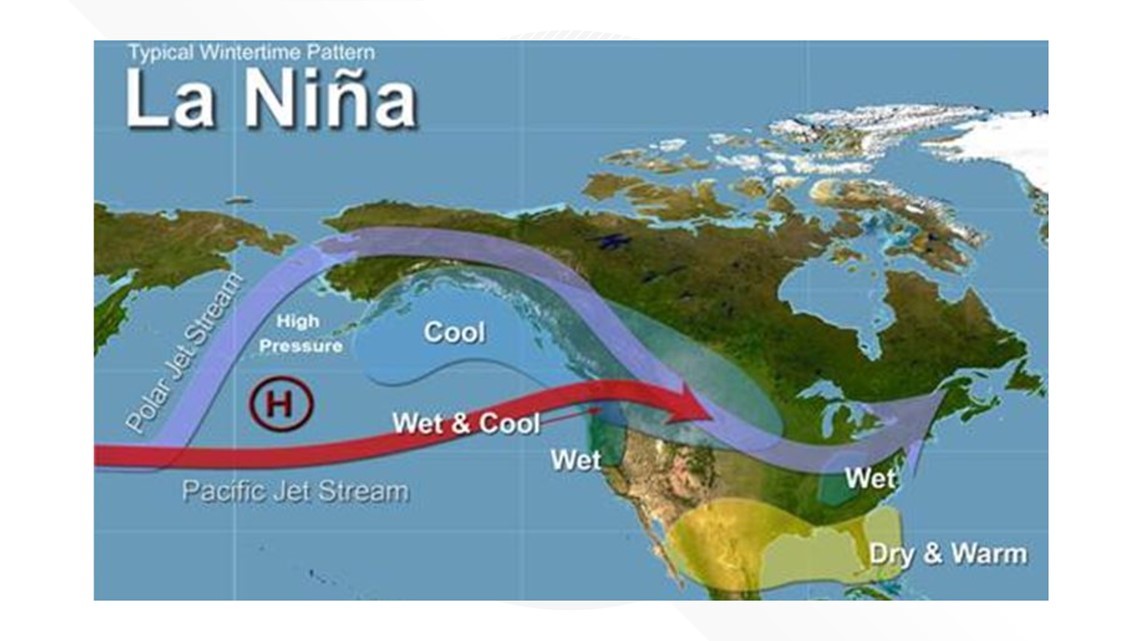
"I expect an active, stormy winter, with the potential for lots of different kinds of storms," Zaffino said. "It’s still 2020, the year of the weird. I don’t think we should expect it to end, or 2021 to begin, any differently than that."
He said this winter, Oregon will most likely get at least one or two significant valley snowfalls.
In the mountains, there's a good chance Oregon will see epic snowfall in the mountains in terms of quality (coldness) and quantity.
The amounts are difficult to predict, and each La Niña year is a little different from the next, so we’ll have to wait and see.
In the meantime, if you'd like a second opinion, look no further than Rod Hill's Winter Outlook 2020
Bigfoot spotting
The Washington State Department of Transportation (WSDOT) decided to have fun on its Twitter account back in January, and media outlets decided to play along.
The department first tweeted photos of what it said might be a Sasquatch at Sherman Pass in Northeast Washington. The photos show a Sasquatch-like figure near a tree.
"I'm not superstitious ... just a little stitious," the person running the account said in the tweet.
People played along, replying to the tweet to ask for more photos and if a search party could be formed to look for the figure spotted by the cameras.
One day later, the person running the Twitter account said Bigfoot is apparently making the round across mountain passes, with another sighting on the I-90 wildlife crossing near Snoqualmie Pass.
The video attached to the tweet wasn't quite as convincing the second time around.
Quarantine begins
About three weeks after Oregon reported its first case of COVID-19, Gov. Kate Brown ramped up statewide restrictions with the first stay-at-home order.
The executive order forced nonessential businesses to shut down and constrained social and recreational gatherings, as everyone probably remembers quite well.
Businesses that remained open had to start implementing social distancing guidelines. That was the beginning of the decals on floors spaced six feet apart and one-way signs in grocery store aisles.
The order also sent thousands of Oregonians out of their offices to go work from home remotely.
Brown issued the order shortly after speaking with mayors in the Portland area who called for tighter restrictions on travel. Mayors along the northern Oregon coast passed emergency orders essentially kicking guests out of hotels and other types of licensed lodging.
The rules were met with mixed reactions from the public, as some businesses closed until they could no longer reopen while others defied the order and risked thousands of dollars in fines.
Read the complete executive order HERE.
The origin of COVID-19
In early March, days after Oregon reported its first COVID-19, there were a lot of people asking where the coronavirus actually came from.
KGW's Brenda Braxton spoke with Portland State University biology professor Ken Stedman, an expert on viruses and the spread of viruses, to clear up some unknowns.
While the 25-minute interview cleared up some questions about the coronavirus, it's obvious there's a ton we still don't know.
Stedman said it's pretty clear the virus that causes COVID-19 originated bats
"The reason we know that is if you look at bats, bats have a massive amount of diversity of coronaviruses in bats, way more coronaviruses in bats than in any other animal anybody’s ever seen," he said. "We’ve got four or five different coronaviruses that infect us, but bats have probably hundreds of different coronaviruses."
He said that's just the first indication. The second, he said, is that if you also look specifically at the genes that are present in the viruses causing COVID-19 in humans, they're extremely similar to a bat virus that was found in some caves in China. He said the virus that was discovered is not identical to the one infecting humans, but it’s "so similar that it’s highly likely that this virus, which is infecting us and the one that’s infecting bats, came from a common ancestor probably not that long ago."
The way the coronavirus started infecting humans is not as clear, but Stedman has a theory. He said it's likely the coronavirus causing COVID-19 started in a wet market in China, where many live animals are sold both legally and "less legally."
He said it's likely that some wild animals in a wet market were infected with a bat virus, potentially through eating or being exposed to the bat's guano, or excrement.
He said it's possible the virus that causes COVID-19 stemmed from pangolins, which he described as "kind of a cross between an ant-eater and an armadillo."
Just like we can only speculate how the disease transferred from bat to animal, the same goes for the transfer from animal to human.
Read the full interview HERE.

